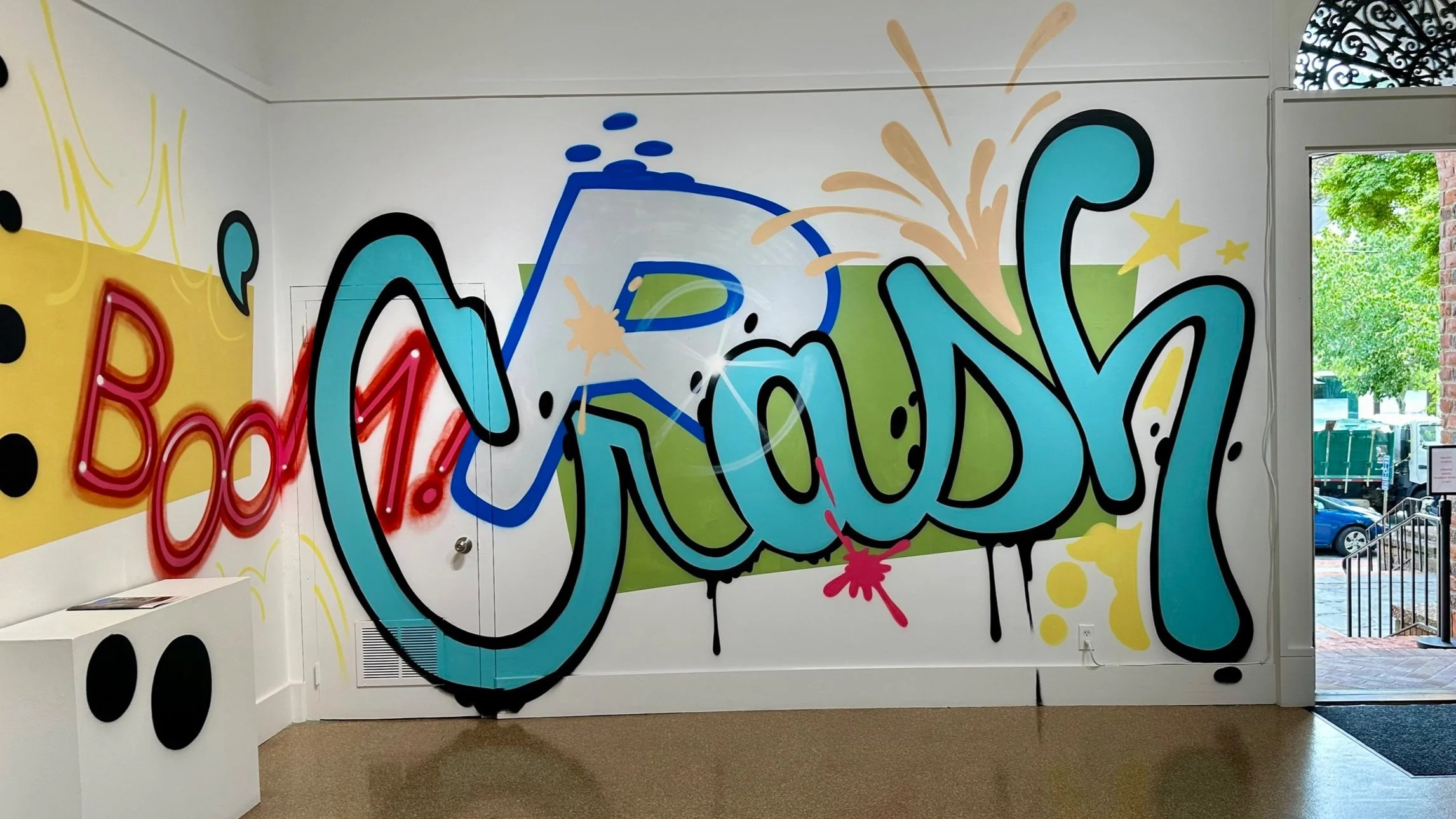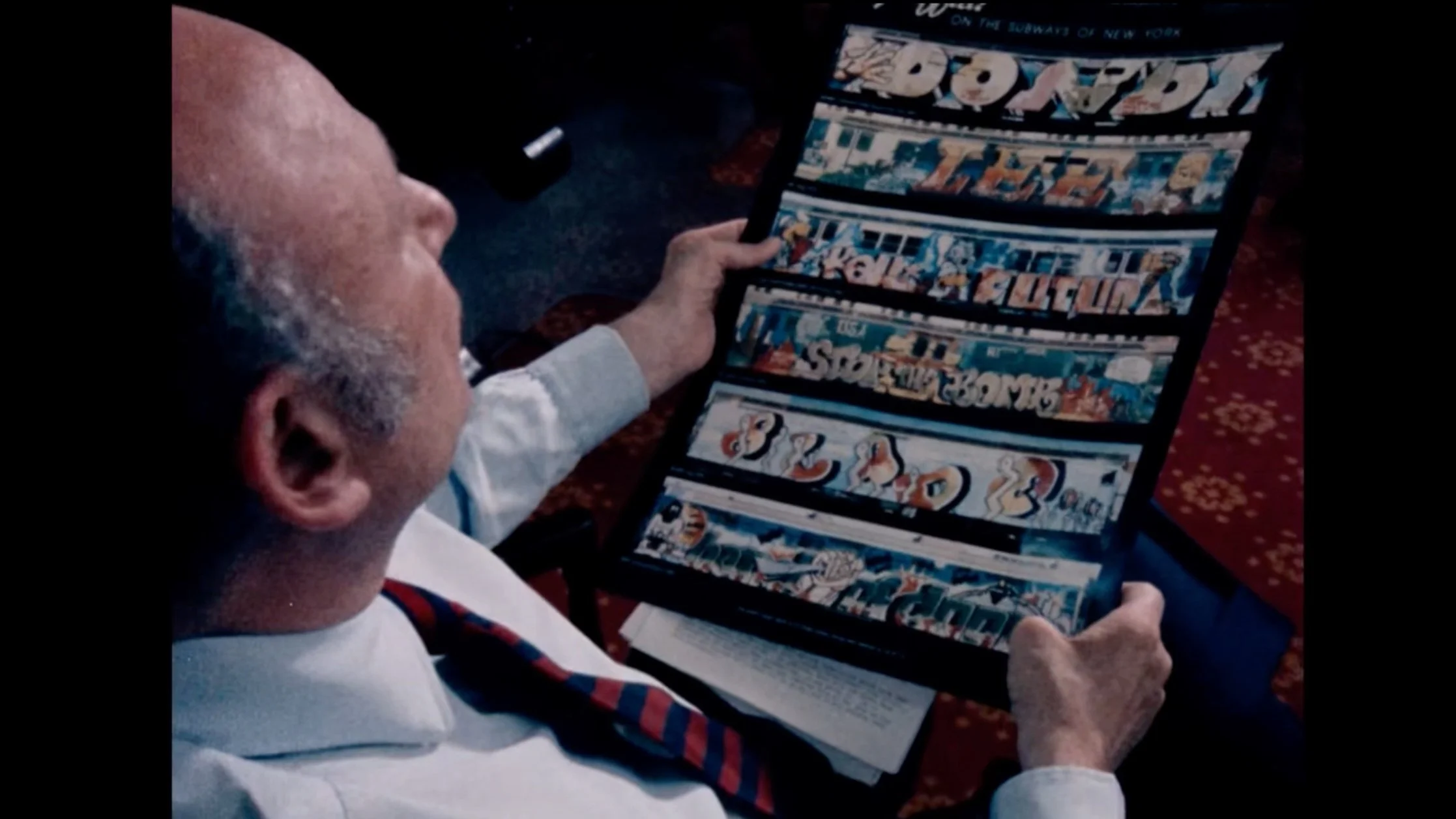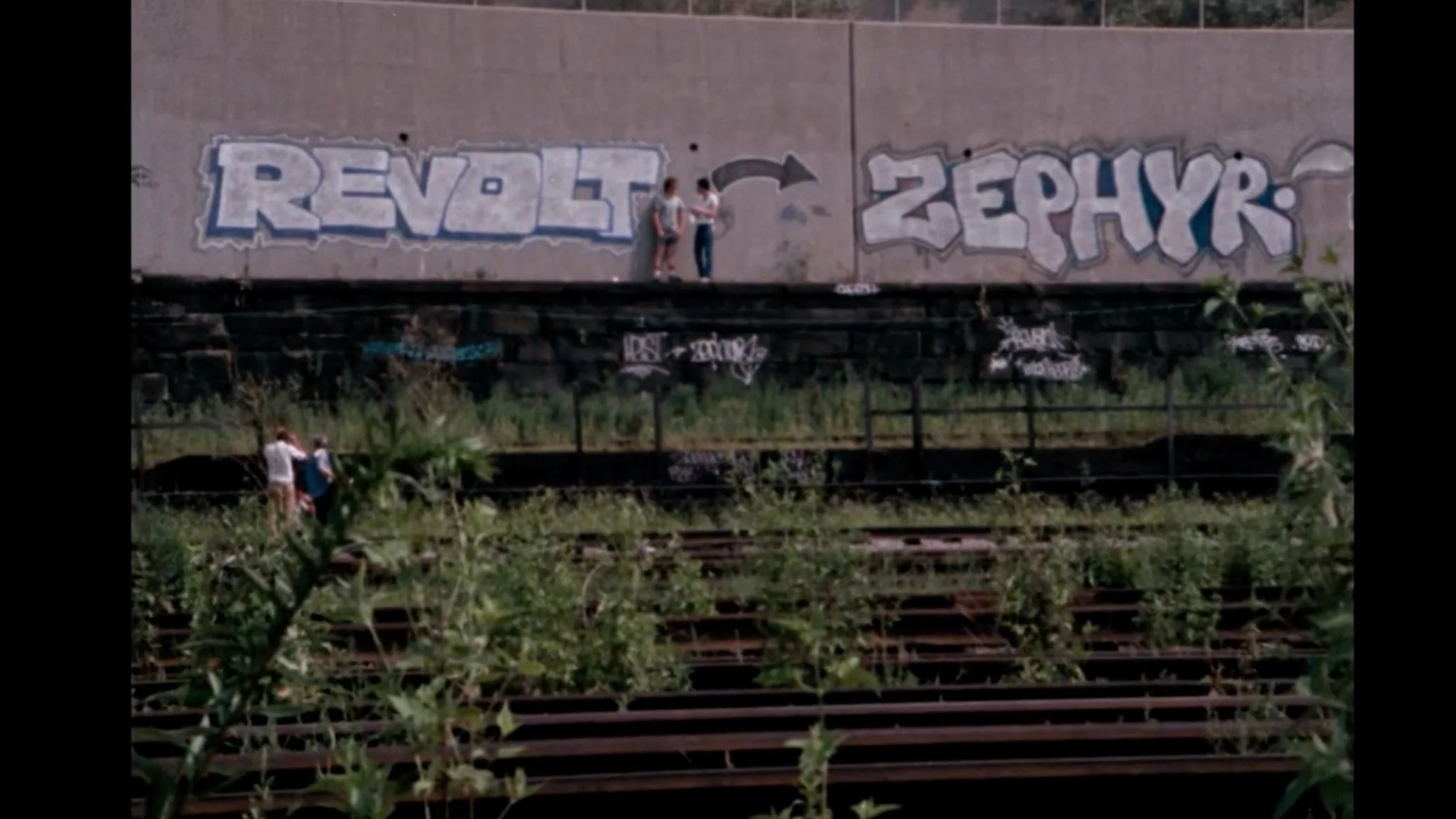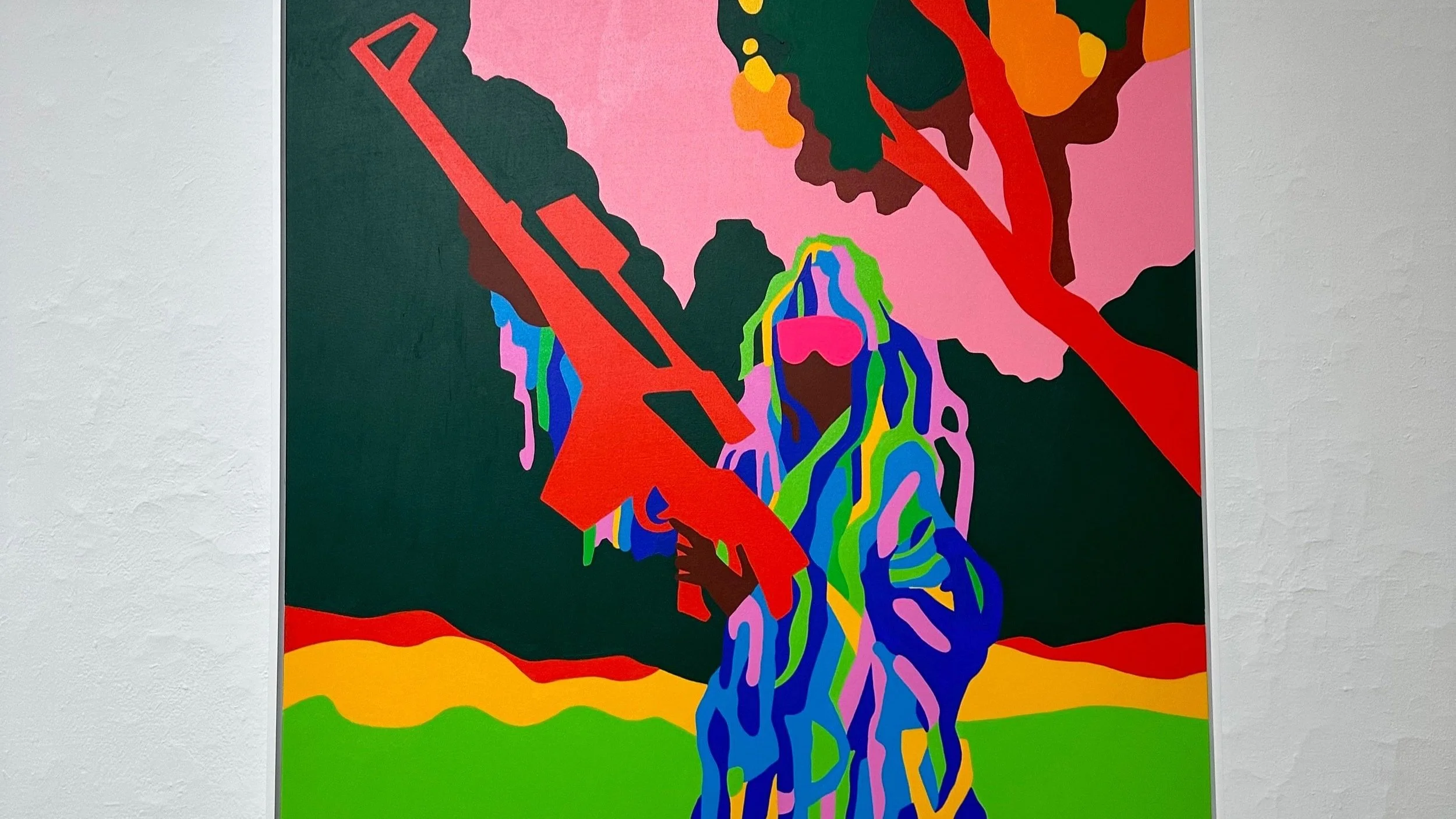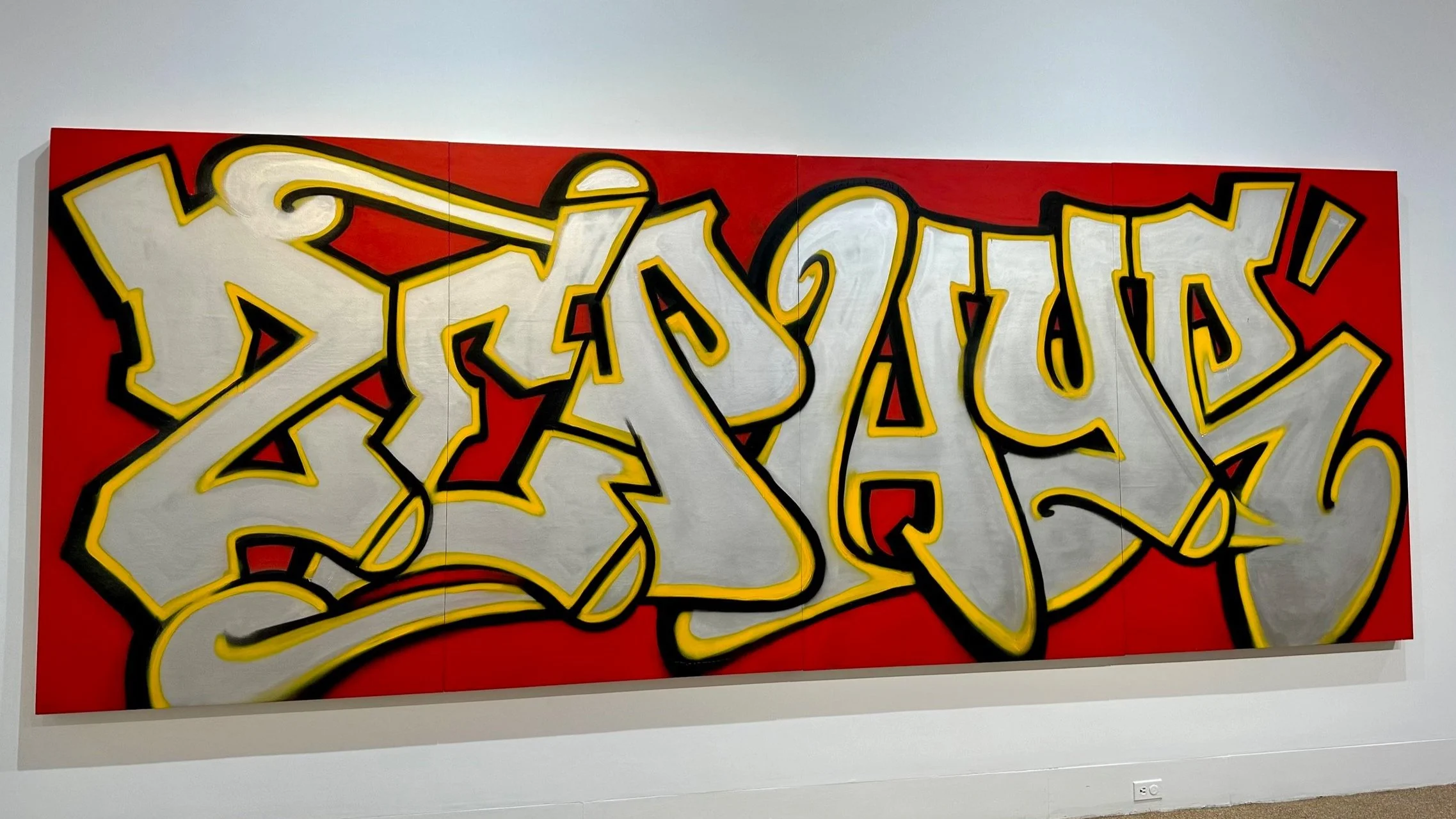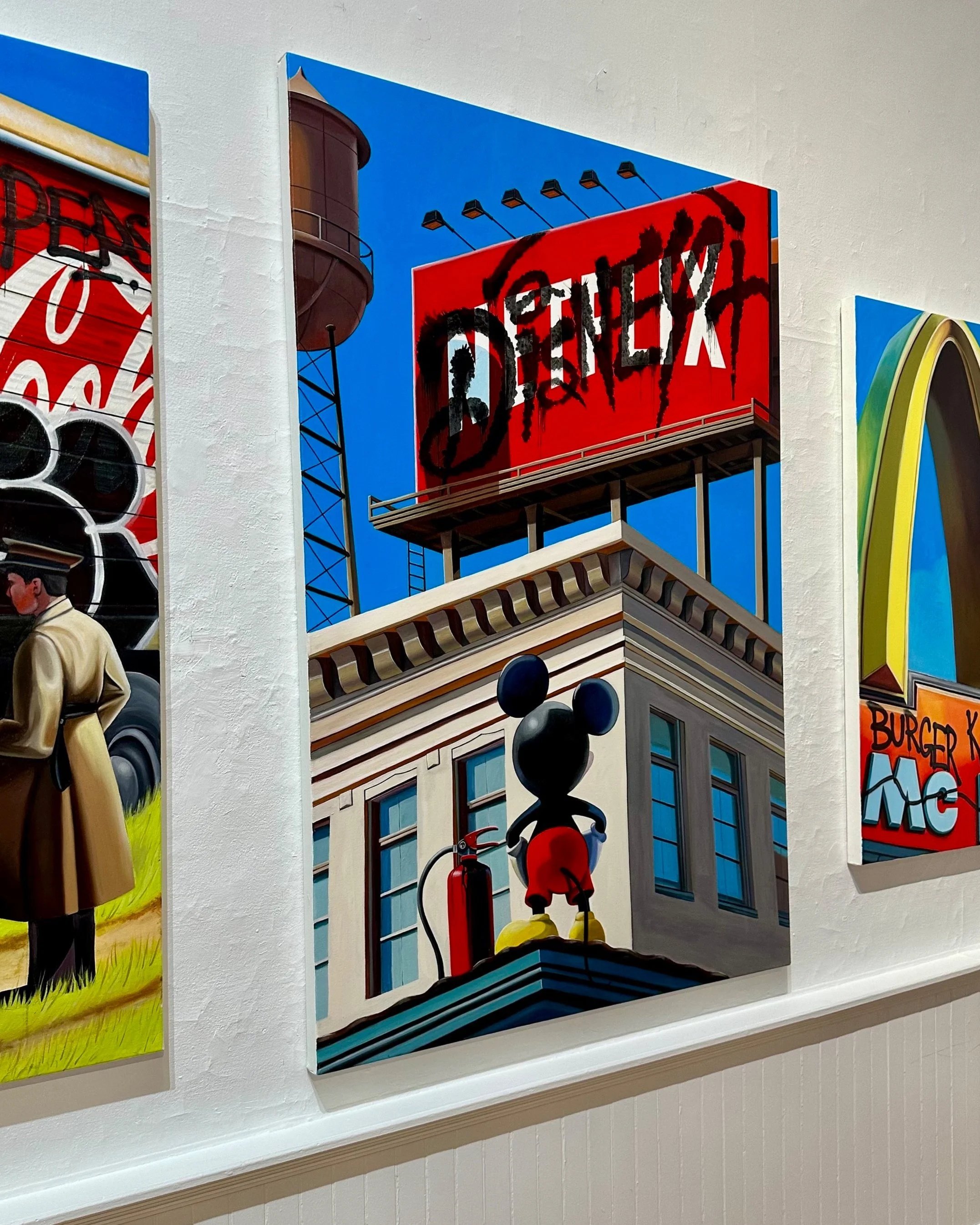Graffitied Science
I went on a trip to NYC in the 80’s specifically to see graffiti. Well, also to eat pizza. But, this is not about the art of pizza.
Up to that point I had only seen subways “bombed” by way of national news or movies like Beat Street (1984). Both depicted tags and top-to-bottoms as negatives. At least the movie tried to convey the creativity of graffiti. What I saw as art, grown-ups in charge saw as vandalism.
The Apple dictionary still describes it as “illicit”.
An archival t-shirt promoting graffiti as vandalism by the NYC MTA. Today, graffiti is the least of the MTA’s problems. (Image: AKJAM Publishing)
Though perspectives have changed, the acknowledgment of graffiti as art and their makers as artists remains minimal. Unless it is Kaws, aka Mr. Brian Donnelly, X-ing out the eyes on cutesy Snoopy for Uniqlo, then the majority of the population is unfamiliar with Skeme or Zephyr. Unbelievable that more people know who Jeff Koons is than these pioneers. Almost.
Artist Skeme’s signature on “Crime in the City” from Style Wars.
When I became the grown up, I found the same speculation in science. Pushback from authorities. Experts in nothing other than ladder climbing- the one’s who put out the most mundane publications about performative research lauded by only a few. Helpful to and understood by even fewer.
The bottom line is what and, importantly, who defines art.
In Style Wars, then NYC Mayor Ed Koch explains that ‘none of these are comparable"‘ works of graffiti. Note the FUTURA.
The $cience
The Southampton Art Center will host Beyond the Streets": Post Graffiti May 11-JUly 20. (Image: AKJAM Publishing)
The Parrish Art Museum in Water Mill will host Kaws’ Time-Off starting mid-Summer. But, a more effectual show at the Southampton Arts Center has been showcasing a host of graffiti artists who are the originators. Beyond the Streets: Post Graffiti at SAC touches on the past and current art of artists who got their start when their art was a crime. This is not the first time graffiti has been analyzed as art in a gallery space. Futura, aka Lenny McGurr, had his work up and conversed over in the 80’s. CBS ran a story about it while Ed Koch did not see Mr. McGurr’s work as “comparable”.
What is art, what makes art is equivalent to what is and makes science.
I remain amazed by how precise graffiti artists were on such little time. The talent and technique were undeniable.
In the documentary Style Wars (1983), one young graffiti artist, Skeme, was given an ultimatum by his mother- get a job or enlist in the military, but no graffiti. Lacking the foresight and support, he is now a veteran.
Zephyr’s autograph shown in Style Wars before he switched it up to Andrew Witten.
When I expressed my interest in pursing more research on the gut-brain connectomics with regard to Ayurveda, I was told it was not real science. It was “bunk”. I kept up the work on my own white subways, so to speak. I presented how neurodegeneration was linked to anxiety and the gut-brain axis and we should be looking at ways to implement personalized combination therapeutics. The intolerance I encountered was a few decades ago and now my work is the fastest growing area in wellness and research.
It is difficult in the moment to push forward in your work without support. Graffiti was originally considered vandalism. So much that NYC aimed to shut down every top-to-bottom that graced the subways. Other people saw it as destruction of art instead of destruction of subways.
Today some of these artists are hailed as pioneers and the art has crossed over to high fashion. Here are the ways graffiti has inadvertently projected itself onto science.
Meeting of the minds. Graffiti artists in Style Wars analyzing and discussing their work.
Space
The space for expression is significant. While graffiti is discouraged because the use of public space without permission, science disfavors so-called low-caliber publications. Many graffiti artists likely did not have the resources for costly canvases and paints, some scientists- especially ones from rarely funded areas of the world- do not have the 10s of thousands of dollars to publish in Science or Nature. Hopefully, that tissue culture stain does not need color printing. They also might not be able to fraternize with the editors from these magazines, akin to graffiti artists not afforded certain rule-making social circles. Not everyone roomed with Keith Haring or has a prominent scientist for a mommy.
Message
The message conveyed is imperative. Tagging up the freeway overpass to claim gang territory is pathetic, not influential art. Like Bansky's work, social statements are meaningful to the community and art world. The same is true for science research. Is it a trite finding to keep up publication numbers and retain an academic seat? Or does the work truly compel to current and future applications on a global scale?
Name
Art and science are also about advertising. A strategy familiar to Keith Haring and Andy Warhol, is to spread your name as far as it can reach. For the originators, the subway system served that purpose. For scientists, Nature and Science serve that goal better than No Name Research. Unfortunately, 5 conference talks outweigh 10 poster presentations. And first authorship has virtually no second author. The elite dictate what we should appreciate and deem important in science and art. Is it important to their interests or for society as a whole? The significance of Jeff Koons is questionable, for example. If not for calculated widespread celebrity and promotion, he would largely be unknown. The manufactured is simply not impressive. Even on their way to our Moon.
Bottom Line
The more we have it dictated that certain things are considered art or science, the slower progress will take for humanity. Art guides our view beyond the world in front of us. Doing that helps science move beyond the 4 corners of the lab. Judging where unfamiliar forms of each discipline come from is where the problem starts, but not where it ends.
Though graffiti is now considered art, who gets to label which graffiti writers are artists? McGurr has not considered himself a graffiti artist for decades, but rather an artist of abstract work. He had a collaboration with Uniqlo, too.
A Tidbit to consider: It is notable that most of those hailed are White. The story tellers that brought this art form to the forefront are also White.
Artists like Kenny Scharf had the privilege of attending art school and having graffiti as inspiration. It was as interdisciplinary as so-called modern science is with Ayurveda.
At the exhibition you’ll see:
John Matos, also known as Crash
Andrew Witten, once known as Zephyr
Leonard McGurr, once known as Futura and FUTURA2000
Barry McGee, once known as Twist
Eric Haze, aka HAZE and Rosie Perez’s husband
Todd James, once known as REAS
Otavio and Gustavo Pandolfo, still known as Osgemeos
SAC is showing Beyond the Streets May 11 through July 20.
If you miss the show in Southampton, then the opportunity to see Osgemeos and Barry McGee at Lehmann Maupin on W. 24th June 22 until August 16. Osgemeos moves to Washington DC starting September 29th.
$CIENCE IS ART

